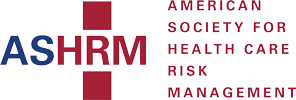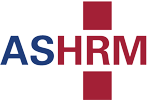Providing sample medications to patients comes not only with good intentions but also with concerns about the safe use and handling of those drugs for patients as well as for a practice. Establishing policies with the office team provides consistent handling of sample medications to prevent unauthorized medication removal, create a method for expired drugs to be removed, return recalled medications to the vendor and identify sample recipients should the patient need to be contacted about a medication recall.
Here are highlights the benefits of providing sample medications and some supportive risk management strategies:
Benefits of Samples:
- An immediate start for beginning a medication regimen
- An opportunity to try a medication before purchasing
- A bridge to “pay day” or when budget just won’t allow for the expense but the medication is much needed. However, for situations when a patient may not be able to continue to pay for the prescription, it may be more beneficial to reach out to the pharmaceutical company to see what programs may be available for the patient.
Risk Management Strategies:
The safe use of samples requires an inventory process and in-office procedures no less stringent than accounting for stored narcotics. The following list includes a few tips for keeping a practice and the patient safe:
Where and how will the medication samples be stored, managed and accessed?
- Sample medications need to be kept in a locked cabinet or secure room within the practice but away from patient access.
- Medications should be organized by type or drug group, not alphabetically.
- Samples requiring refrigeration must be kept at proper temperatures as well as stored away from personal items and food products.
- Designate specific staff members who can access the sample supply cabinet or room.
- Clearly indicate that only pharmacists, physicians or mid-level/advanced practice staff can provide the medication to the patient.
- Create a Sample Inventory Log including the following information:
- Name of the medication
- Quantity of the medication received (prescription or over the counter)
- Lot number for the medication should you learn of a recall of that medication
- Name of patient to whom the medication was issued
- Expiration date
- Date of destruction or return of the medication to the pharmaceutical company
When should sample medications be used?
- Develop a protocol for those situations when to make sample medications available.
How will patient education be conducted with the patient, caregiver and family?
- A patient filling a prescription at a retail pharmacy is required to receive verbal and documented education. A similar process needs to be in place in the practice setting.
How will the patient receive the medication?
- Only pharmacists, physicians or mid-level/advanced practice staff or their verified legal representative should provide the medication to the patient.
- Sample medication must be labeled and include the patient name and instructions, date, dispensing physician, reason for the medication, directions for use, dose and frequency.
- The patient should be advised of side effects or specific precautions about potential reactions for which to be aware.
- Log the medication into the Patient Sample Distribution Log mentioned above.
- Place a note regarding the distribution of the sample medication into the patient’s medical record including instructions, date, reason for the medication, directions for use, dose and frequency.
Resources:
Treat Medication Samples with Respect. (2016). Institute for Safe Medication Practices. Retrieved July 20, 2016.
Joan M. Porcaro, RN, BSN, MM, CPHRM, is a senior risk management consultant at the Mutual Insurance Company of Arizona.








